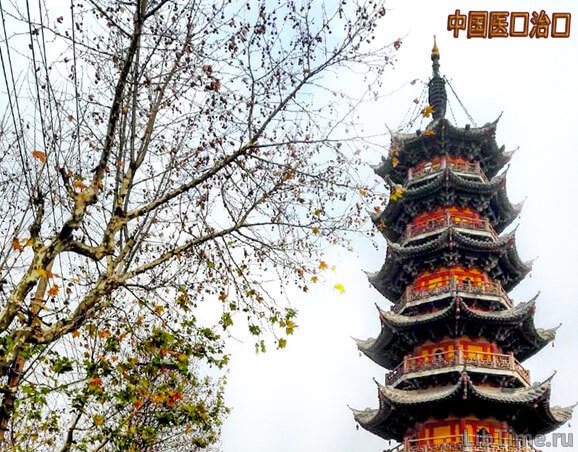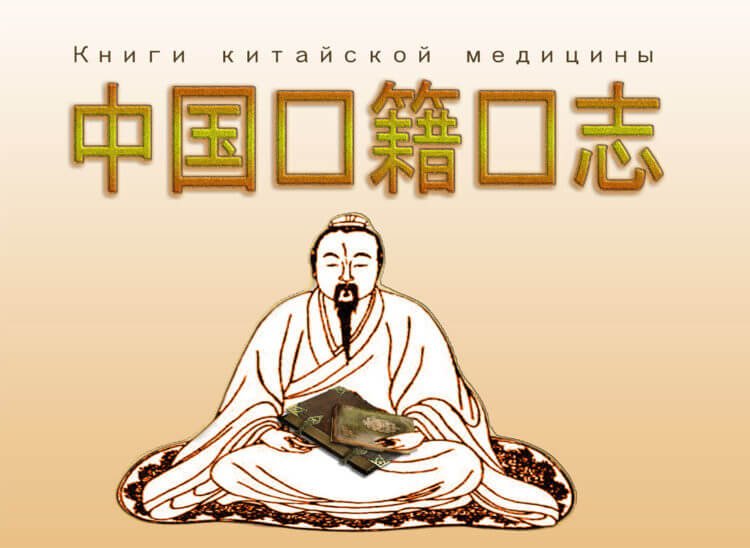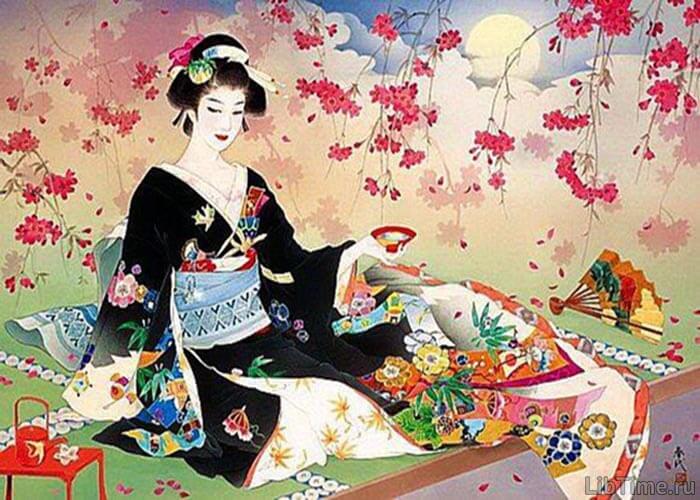Diagnostic methods in ancient Chinese medicine
Already in the first Chinese books describing the methods of diagnosis in ancient Chinese medicine, it is stated that disease can be established by these five techniques:
- inspection,
- smell,
- questioning,
- pulse examination,
- listening.
Chinese physicians consider the condition of the patient as a twofold "touch-sense". There are five senses:
- sight,
- hearing,
- taste,
- touch,
- the sense of smell.
they count the number of senses themselves as six. The sixth is "the feeling of complete satisfaction". Both physical and mental satisfaction are meant.
Objective physical methods of diagnosis
In the medicine of those times, objective physical methods of diagnosis predominate. But they, in the opinion of doctors of Chinese medicine, cannot, for all their value, be considered exhaustive, especially in the initial period of the disease, when it is not yet manifested by a significant change in organs and tissues, in particular:
- Skin (object of examination),
- urine, feces and sweat (objects of smell),
- voice and respiration (objects of hearing),
- thepulse.

The relationship between inner and outer
The connection between the internal and external: between physiological and pathological processes in the human body on the one hand, and the phenomena of the natural environment on the other, has long been not only noted but also recognized as a decisive circumstance for medicine.
At the same time, Chinese physicians, on the basis of their own extensive practical experience, managed to make sure that each organism reacts to the environment in its own way, different from others. And already at the early stages of its development Chinese medicine began to adhere to a peculiar principle of individualization both in treatment and, mainly, in the recognition of painful conditions.
Subjective method of diagnosis
They pay a great deal of attention to the subjective method of diagnosis, which consists of questioning:
- about living conditions,
- general well-being,
- appetite,
- vision, hearing, taste, smell, touch,
- excrement, urine and sweat,
- the effects of various food substances on the body,
- temperature and other environmental effects,
in other words, they try to find out everything that we are finding out now, collecting anamnesis of disease and anamnesis of life. Being interested in such a wide range of questions, Chinese doctors, much earlier than in other countries, developed their own specific methodology.
They advise to question the patient as thoroughly as possible, prescribing for this purpose even a peculiar regulation (about half an hour), indicating the most rational order, the sequence of the questions asked (according to the principle "from the distant to the near, from the general to the particular"). Their totality is summarized as follows: "what are you complaining about?", "when did you fall ill?", "what was the treatment?", "what conditions do you live in?".
The doctor may also ask about this sent from the patient, to be able to make a preliminary judgment about the condition of the latter. But the judgment should not be final. While advising to adhere to a precise system of questioning (for otherwise there may be some omission, and as a result an incorrect or incomplete definition of the disease), Chinese physicians advise, in addition, never rush to conclusions.
A decision made without proper consideration of the data obtained is often as incomplete as a mere questioning without the use of other diagnostic methods.
External examination
Next in order is the external examination. Inspected, as a rule, only the exposed parts of the body, sometimes with palpation of the abdomen. But it still does not give the right to speak about the primitiveness of this method, especially as we are talking about the method used in China already in the beginning of the first millennium BC.
Already then attention was paid to the diagnostic value of facial expression, eyes, especially pupils, mouth, tongue, ears, nose and mucous membranes, as well as skin. Suffice it to say that Chinese medicine identifies 36 painful conditions in which the tongue can be white, red, black, dry, wet, hard, etc.
Proceeding from the position on the relationship between the face and the five main organs, Chinese medicine as if connected the face and these organs into peculiar diagnostic pairs with the traditional five main colors. Thus:
- red coloring of the face, according to Chinese medicine, is more often associated with heart disease,
- white is associated with lung disease,
- black color indicates kidney and bladder dysfunction,
- blue for stomach and spleen,
- yellow - liver and gallbladder.
Regarding these organs, one can also get an idea by looking at the individual parts and organs located on the face. It is believed that:
- Liver disease affects the eyes and eyebrows,
- the heart on the cheekbones,
- the stomach on the nose,
- the kidneys on the ears;
- pathological condition of the spleen and stomach corresponds to a special condition of the mouth, lips (especially the corners of the mouth), chin, etc.
Diagnostic value of the skin
Chinese medicine has accumulated many observations and conclusions regarding the diagnostic value of the skin. By probing it (especially carefully in the neck area - a very interesting fact), Chinese physicians try to establish not only the condition of the skin (tenderness, elasticity, roughness, dryness, moisture, etc.), but also the increase or decrease in body temperature.
Listening technique
About the technique of listening and its role in diagnosis, we can say that, without using auscultation in the modern sense of the word, Chinese doctors have developed quite original techniques in this case. First of all, it refers to listening to the voice of the patient.
In his sounds, and especially in the changes in the voice, according to the patient's words, the doctor sees indications to search for the correct diagnosis. The same applies to breathing.
Diagnostic reception "smell"
On the diagnostic technique, called in China "smell", should be dwelled on in more detail. In this term is invested more than the designation of a simple study of odors. It is rather a complex of symptoms that are equally perceptible by sight, hearing, taste, touch and smell. All of which, Chinese medicine believes, should be used when examining the five secretions:
- sputum,
- feces,
- vomit,
- urine,
- blood.
Body temperature, skin color, sputum viscosity and whether it is salty or bitter are examined. With urine analysis the case is even more complicated. We can think that in China was the beginning of its division into daily samples: morning, noon, evening and night, and in each of them determined such important data as the amount, color, odor, transparency, as well as the number and features of the urine sediment.
And here is a sample that speaks for itself. It is on display in the Canton Museum.
A well-preserved old engraving shows a doctor watching the behavior of ants after he poured the patient's urine on the sand near an anthill. If the ants rushed to the urine-soaked sand, the diagnosis of diabetes was considered confirmed, otherwise the disease was ruled out. The engraving mentioned above is from the second century BC.
Special attention was paid to the examination of the pulse of the patient.
Striving to establish with the most accessible completeness all the symptoms of the disease available at the moment, in other words, to find out the objective condition of the patient, Chinese physicians always thought about the origin of certain diseases. Guided by the position of the significant, if not decisive importance of the environment, they proceeded from the principle: "there is no suffering without a cause".
Nutritional disorders
The main cause of all kinds of disorders of normal functions, according to Chinese doctors, is a violation of nutrition. But in this term they always put a much broader content than dietetics - therapeutic nutrition, in the narrow sense of the word. There is reason to consider this term coinciding with our ideas about trophic processes.
That is why already in the classical canons dating back to the 3rd-1st centuries B.C., physicians were instructed to identify the signs resulting from both strengthening or weakening of the nutrition of tissues and organs, and from the disturbance of the processes of excretion of waste products from the body.
In doing so, the following instructions were given. Insufficient in quantity and poor in quality nutrition (i.e. food, drink and air) causes darkening of the outer skin (due to stagnation of venous blood), sharp thinness, shivering, need for warmth, abdominal bloating (due to flatulence and constipation). These patients
excessively irritable, very verbose, suffer from dizziness, they have poor sleep, upset senses.
These are symptoms of a general disorder of trophic processes. But the Chinese physicians are keen to identify the specifics:
- they distinguish between disorders arising from both over-nutrition and under-nutrition;
- they consider disorders of the nutrition of every organ and tissue,
- distinguish separately disorders in the assimilation of food and drink, from disorders in the "assimilation" of air.
An explanation of the first position may be given by such a rule of Chinese medicine:
As the normal nutrition of the tissues is manifested in a normal number of compartments, their increased formation indicates excessive, and insufficient - on weakened nutrition of the tissues.
The second point may be illustrated by such an indication:
When disturbed due to excessive nourishment of the blood tissue, swellings develop, external and internal malignant tumors arise, movements become difficult, urine becomes reddened, the main vessels of the skin dilate and also become reddened, and the whites become yellowish.
And here is an example to the third statement of the complex of symptoms associated with impaired "assimilation" of air. In this case:
The pulse is full, tense, but not elastic. The urine is light-colored, frequent dizziness, indifferent attitude to the surrounding, heaviness in the head, tinnitus, dry, red, stiff tongue, astringent taste in the mouth, stabbing pains in different parts of the body, which increase with movement, trembling, "gooseflesh". The patient has a feeling as if something has narrowed it, tightened; insomnia, yawning, various types of pain in the lower back, in the joints, and in the neck, breastbone and jaw - aching and stabbing pains, dry prolonged cough in the morning, separation of frothy sputum, abdominal bloating. All these symptoms are aggravated in the evenings or early in the morning after meals.
Amazing observation, knowledge of subtle semiotics - these are the main advantages that distinguish the principles of diagnosis of folk doctors of China during many millennia of its glorious history.
Leaving aside everything that from the point of view of modern science can not be considered acceptable and is only of historical interest, it is impossible to overestimate the methods of diagnosis in Chinese medicine.


